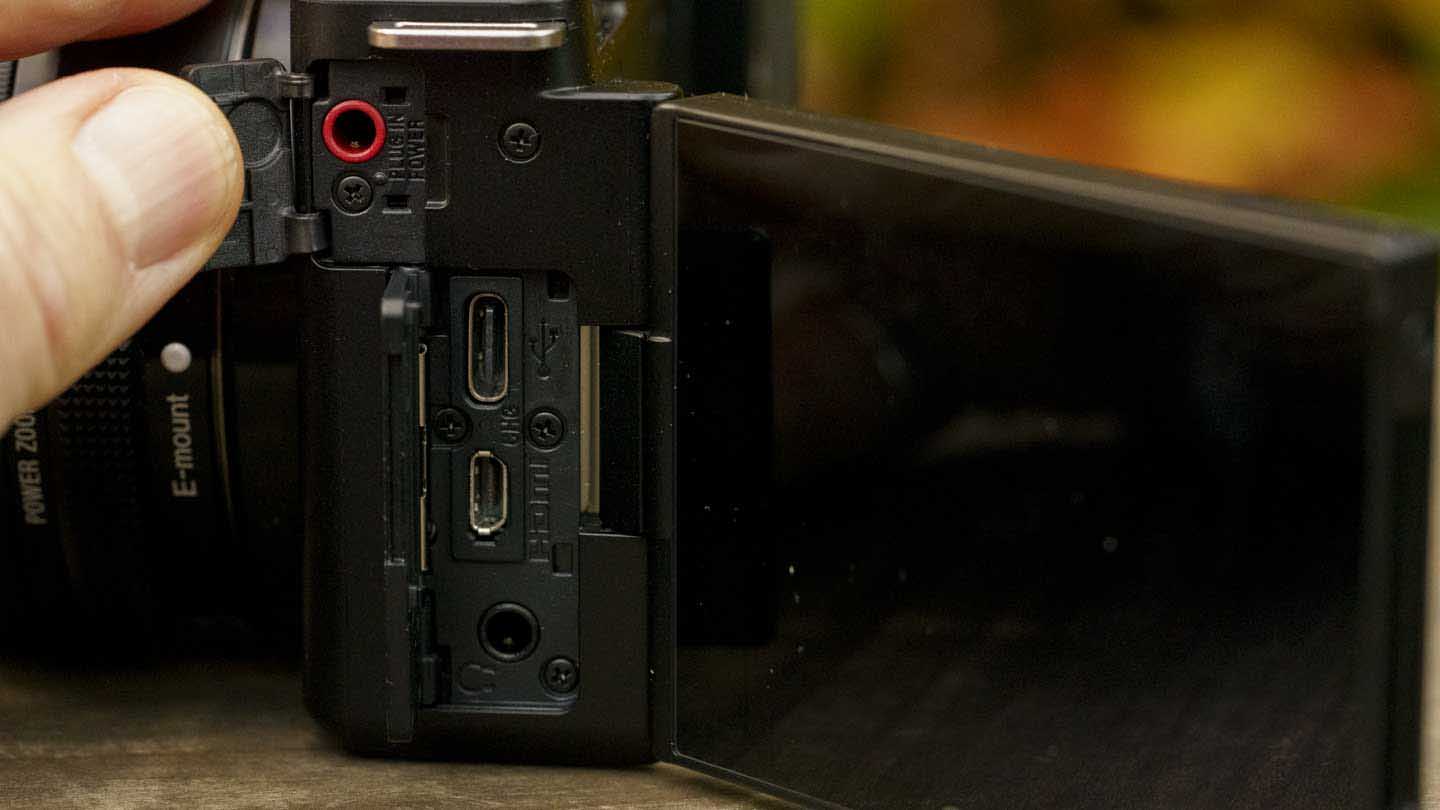As usual, Sony’s autofocus system puts in a good performance so the ZV-E10 is capable of getting subjects sharp quickly and keeping them sharp. The Face/Eye detection AF system works very well and is perfect for anyone vlogging for the first time, but it’s also a massive help for more experienced users and people photographers.
At launch the Sony ZV-E10 was only capable of detecting and focusing on human eyes in video mode, but when shooting stills it can detect human or animals eyes. A firmware update introduced on 2nd December 2021, adds Animal eye AF in video mode.
Follow the link to download the free Sony ZV-E10 firmware upgrade.
While the Face/Eye detection AF is helpful for photographs or video of people when they’re looking towards you, the Tracking AF has a wide range of uses and is very reliable too. For example, when capturing some BTS (behinds the scenes) footage of a portrait shoot, I could tap on the screen and ensure that the subject I wanted to focus on, be that a lens or a person, was sharp as they or the camera moved.
Sony introduced the Product Showcase feature with the ZV-1 and again in the ZV-E10 it shows its worth, quickly shifting the focus away from the eye to a small product that shown to the camera. By default, it’s activated by pressing the Fn button when the camera is recording, and with care, it is possible to press that from in front of the camera, but it would be easier to tap an option on the screen.
The Sony ZV-E10’s SteadyShot stabilisation works well when you’re handholding the camera. In Standard mode, it takes out most of the shake and Active mode takes out the last element, but it isn’t effective enough to produce washable footage when you’re walking with the camera. Active SteadyShot also crops the frame heavily so you may need to take a step or two back or use a wider lens than you might otherwise select. It means that the framing at the 16mm end of the 16-50mm lens is tight if you’re holding the camera at arm’s length, but it’s manageable and one of Sony’s grips will help.
If you pan the camera slowly, you may notice that the image drifts a little after the camera comes to a halt. Move the camera more rapidly, however, and you’re likely to see the classic jello or rolling shutter effect.
With the wind-muff in position, the on-board microphone does a good job of recording natural-sounding audio. It picks up voices well and isn’t overly troubled by wind noise. As usual when you’re recording outside without anyone speaking, you become more aware of the background sounds that we often manage to ignore in normal life.
Sony ZV-E10 image quality
A 24Mp APS-C format sensor from Sony isn’t going to throw up many surprises. The ZV-E10 is capable of capturing a good level of detail at the lower sensitivity settings. This is maintained well up to around ISO 6,400 when the raw files have a fine texture of evenly-distributed luminance noise and the Jpegs look clean without been too smooth. The results at ISO 12,800 are also good with noise kept under control pretty well, but I would avoid going above this value because as well as a step up in the amount of noise (or the more noticeable impact of its removal), there can be some false colour in the shadow areas.
Sony ZV-E10 video quality
The ZV-E10’s features combine well to deliver good-quality 4K video. If you’re handholding the camera, you need to have the SteadyShot stabilisation set to Standard mode if not Active mode to get smooth footage.
As previously, mentioned, the autofocus system also does a great job of keeping the subject sharp. In some instances you can leave it to the camera to select the subject but it’s often best to tap the screen to select the subject yourself and set the Tracking mode going.











